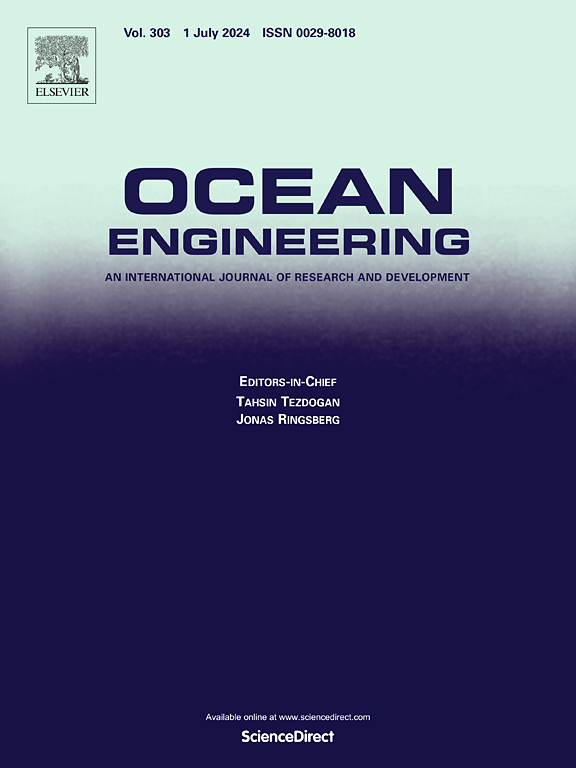A partitioned based algorithm for cohesive crack simulations subjected to fluid–structure interaction effects
IF 4.6
2区 工程技术
Q1 ENGINEERING, CIVIL
引用次数: 0
Abstract
Currently, it remains a challenging task to accurately simulate progressive crack behaviors subjected to fluid–structure interaction (FSI) effects. In light of this, the main purpose of the present work is to develop a two-way partitioned based computational framework to account for dynamic fluid–structure–fracture interaction (FSFI) phenomena arising in ocean engineering. To achieve the end, in consideration of accuracy and robustness, the developed framework couples two grid-based methods, i.e., the finite volume method (FVM) and the explicit finite element method (FEM), to respectively describe fluid flows and structural deformations. The well-known arbitrary Lagrangian–Eulerian (ALE) method is utilized to handle interface motions of fluid–solid coupling in an effective manner. Progressive crack behaviors subjected to FSI effect are described with the aid of an intrinsic cohesive zone model (CZM) in the context of dynamic explicit finite element formulations. Considerable attention has been paid to integrate the aforementioned algorithms with consideration of efficient data mapping/communication, appropriate coupling schemes, and effective time-step synchronization. The accuracy and effectiveness of the developed computational framework are validated via three benchmark FSI tests considering hydrostatic pressure, steady fluid force, and hydrodynamic impact, as well as two mixed-mode crack tests. Finally, the capacity of the computational framework is further demonstrated with the applications to crack behaviors of an elastic plate and a gravity dam with initial cracks subjected to hydrostatic/hydrodynamic loads.
求助全文
约1分钟内获得全文
求助全文
来源期刊

Ocean Engineering
工程技术-工程:大洋
CiteScore
7.30
自引率
34.00%
发文量
2379
审稿时长
8.1 months
期刊介绍:
Ocean Engineering provides a medium for the publication of original research and development work in the field of ocean engineering. Ocean Engineering seeks papers in the following topics.
 求助内容:
求助内容: 应助结果提醒方式:
应助结果提醒方式:


